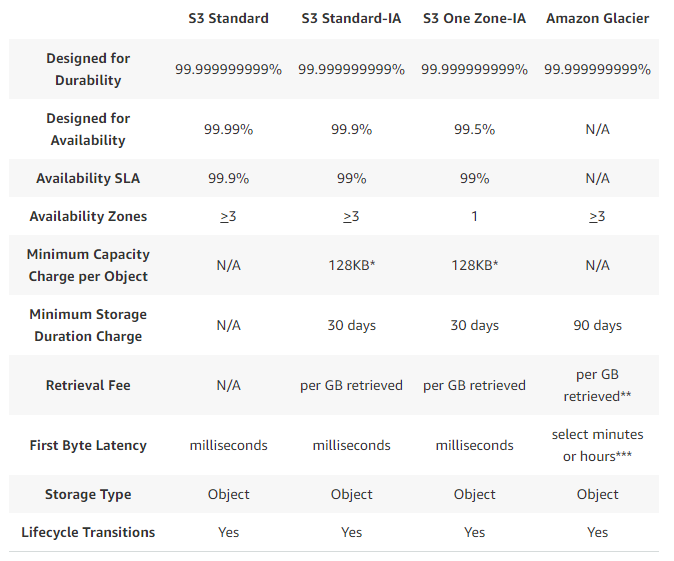
AWS’ S3 storage service today launched a cheaper option for keeping data in the cloud — as long as developers are willing to give up a few 9s of availability in return for saving up to 20 percent compared to the standard S3 price for applications that need infrequent access. The name for this new S3 tier: S3 One Zone-Infrequent Access.
S3 was among the first services AWS offered. Over the years, the company added a few additional tiers to the standard storage service. There’s the S3 Standard tier with the promise of 99.999999999 percent durability and 99.99 percent availability and S3 Standard-Infrequent Access with the same durability promise and 99.9 percent availability. There’s also Glacier for cold storage.

Data stored in the Standard and Standard-Infrequent access tiers is replicated across three or more availability zones. As the name implies, the main difference between those and the One Zone-Infrequent Access tier is that with this cheaper option, all the data sits in only one availability zone. It’s still replicated across different machines, but if that zone goes down (or is destroyed), you can’t access your data.
Because of this, AWS only promises 99.5 percent availability and only offers a 99 percent SLA. In terms of features and durability, though, there’s no difference between this tier and the other S3 tiers.
As Amazon CTO Werner Vogels noted in a keynote at the AWS Summit in San Francisco today, it’s the replication across availability zones that defines the storage cost. In his view, this new service should be used for data that is infrequently accessed but can be replicated.
An availability of 99.5 percent does mean that you should expect to experience a day or two per year where you can’t access your data, though. For some applications, that’s perfectly acceptable, and Vogels noted that he expects AWS customers to use this for secondary backup copies or for storing media files that can be replicated.


